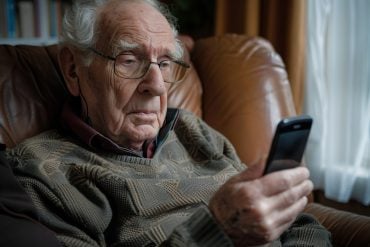Summary: A novel deep convolutional neural network AI algorithm can detect COVID-19 within minutes with 98% accuracy.
Source: University of the West of Scotland
Pioneering Artificial Intelligence (AI) technology, developed by experts at University of the West of Scotland (UWS), is capable of accurately diagnosing Covid-19 in just a few minutes.
The groundbreaking program is able to detect the virus far more quickly than a PCR test; which typically takes around 2-hours.
It is hoped that the technology can eventually be used to help relieve strain on hard-pressed Accident and Emergency departments, particularly in countries where PCR tests are not readily available.
The state-of-the-art technique utilises x-ray technology, comparing scans to a database of around 3000 images, belonging to patients with Covid-19, healthy individuals and people with viral pneumonia.
It then uses an AI process known as deep convolutional neural network, an algorithm typically used to analyse visual imagery, to make a diagnosis. During an extensive testing phase, the technique proved to be more than 98% accurate.
Professor Naeem Ramzan, Director of the Affective and Human Computing for SMART Environments Research Centre at UWS, led the three-person team behind the project, which also involved Gabriel Okolo and Dr Stamos Katsigiannis.
He said: “There has long been a need for a quick and reliable tool that can detect Covid-19, and this has become even more true with the upswing of the Omicron variant.
“Several countries are unable to carry out large numbers of Covid tests because of limited diagnosis tools, but this technique utilises easily accessible technology to quickly detect the virus.
“Covid-19 symptoms are not visible in x-rays during the early stages of infection, so it is important to note that the technology cannot fully replace PCR tests.
“However, it can still play an important role in curtailing the viruses spread especially when PCR tests are not readily available.

“It could prove to be crucial, and potentially life-saving, when diagnosing severe cases of the virus, helping determine what treatment may be required.”
Professor Milan Radosavljevic, Vice-Principal of Research, Innovation and Engagement at UWS, added: “This is potentially game-changing research. It’s another example of the purposeful, impactful work that has gone on at UWS throughout the pandemic, making a genuine difference in the fight against Covid-19.
“I am incredibly proud of the drive and innovation demonstrated by our internationally renowned academics, as they strive to find solutions to urgent global problems.”
The team now plans to expand the study, incorporating a greater database of x-ray images acquired by different models of x-ray machines, to evaluate the suitability of the approach in a clinical setting.
About this AI and COVID-19 research news
Author: Andrew Murray
Source: University of the West of Scotland
Contact: Andrew Murray – University of the West of Scotland
Image: The image is in the public domain
Original Research: Open access.
“On the Use of Deep Learning for Imaging-Based COVID-19 Detection Using Chest X-rays” by Naeem Ramzan et al. Sensors
Abstract
On the Use of Deep Learning for Imaging-Based COVID-19 Detection Using Chest X-rays
The global COVID-19 pandemic that started in 2019 and created major disruptions around the world demonstrated the imperative need for quick, inexpensive, accessible and reliable diagnostic methods that would allow the detection of infected individuals with minimal resources.
Radiography, and more specifically, chest radiography, is a relatively inexpensive medical imaging modality that can potentially offer a solution for the diagnosis of COVID-19 cases. In this work, we examined eleven deep convolutional neural network architectures for the task of classifying chest X-ray images as belonging to healthy individuals, individuals with COVID-19 or individuals with viral pneumonia.
All the examined networks are established architectures that have been proven to be efficient in image classification tasks, and we evaluated three different adjustments to modify the architectures for the task at hand by expanding them with additional layers.
The proposed approaches were evaluated for all the examined architectures on a dataset with real chest X-ray images, reaching the highest classification accuracy of 98.04% and the highest F1-score of 98.22% for the best-performing setting.






